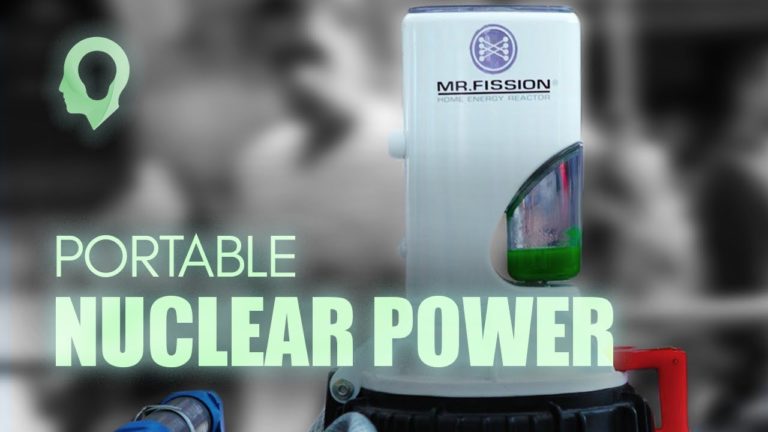Portable Nuclear Power
Of all the power sources available to man, none has been as extraordinary in energy yield as nuclear fission. In fact, a single gram of fissile nuclear fuel, in theory, contains as much free energy as the gasoline contained within a small fuel tanker truck. By the early 2000s, concerns over carbon dioxide emissions would bring about a renewed interest in nuclear power. And with this, came a myriad of developments that aimed at improving the safety and sustainability of large scale reactors. However, in recent years, a new paradigm in how nuclear fission reactors are created and utilized is starting to gain momentum.
NUCLEAR FISSION
To date, almost all nuclear power reactors extract energy from the process of nuclear fission. In this process, a fissile nuclear fuel is bombarded with neutrons. As the nucleus of the fuel’s atoms captures a neutron by the strong nuclear force, it begins to deform resulting in the nucleus fragments exceeding the distances at which the strong nuclear force can hold the two groups of charged nucleons together. This tug of war between the strong nuclear force and the electromagnetic force ends with the two fragments separating by their repulsive charge.
Because fission reactions are primarily driven by bombardment, establishing and regulating a sustained fission chain reaction becomes feasible through controlling the free neutron movement within a reactor. This characteristic allows for fission reactions to be “throttled”, making it well suited for electric power generation.
FIRST REACTORS
The first practical nuclear reactor was developed during the early 1950s by the U. Known as the S1W reactor, it would see its first deployment on the USS Nautilus in January 1954. The S1W was a relatively simple and compact design known as a pressurized water reactor. The fission chain reaction can also be throttled by introducing neutron absorbers into the reactor core.
IMPROVEMENTS ON REACTOR DESIGN
Within a decade, the two circuit designs of pressurized water reactors would be reduced to a single loop configuration with the introduction of boiling water reactors. Designed primarily with civilian power generation in mind, a boiling water reactor directly produces steam by heating cooling water with the reactor core. This steam is then directly used to drive a turbine, after which it is cooled in a condenser and converted back to liquid water, and pumped back into the reactor core. Boiling water reactors still utilized water as the neutron moderator and chain reaction throttling via control rods or blades was also retained.
GAS REACTORS
In gas cooled reactors, an inert gas is used to transfer heat from the reactor core to a heat exchanger, where steam is generated and sent to turbines. Neutron moderation is accomplished by encasing the nuclear fuel in either graphite or heavy water. The effectiveness of how they moderate neutrons also permits the use of less-enriched uranium, with some reactors being able operate purely on natural uranium.
PEBBLE-BED REACTORS
These thin, solid layers are are composed of a 10 micron porous inner carbon layer that contains the fission reaction products, a neutron moderating, and protective 40 micron pyrolytic carbon inner-layer, a 35 micron silicon carbide ceramic layer to contain high temperature fission products and add structure to the particle, and another protective 40 micron pyrolytic carbon outer later. TRISO fuel is incredibly robust and resilient. They can survive extreme thermal swings without cracking as well as the high pressures and temperatures of fission cooling systems.
Gas cooled reactors work especially well with TRISO fuel because of their ability to operate at high temperatures while remaining chemically inert. When combined with TRISO fuel, they also offer incomparable levels of nuclear containment.
SMRs
SMRs are nuclear reactors of relatively small power generation capacity, generally no larger than 300 MW. They can be installed in multi-reactor banks to increase plant capacity and they offer the benefit of lower investment costs and increased safety through containment.
PROJECT PEELE
Called Project Peele, the program is planned around a two year design-maturation period where a generation IV reactor design will be adapted to small scale, mobile use. X-Energy, in particular, has promoted TRISO pebble bed technology as the ideal choice for such a rugged reactor design.
In addition, the full-scale deployment of Fourth Generation nuclear reactor technologies will have significant geopolitical implications for the United States while reducing the Nation’s carbon emissions.
Do not forget to share your opinion with us to provide you with the best posts !




0 Comments